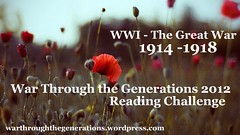
Hardcover, 112 pgs.
I am an Amazon Affiliate
We Will Not Be Silent by Russell Freedman is a book about a resistance movement started by young boys and girls after they saw what the Hitler Youth movement was really like and what it was about. The White Rose movement ultimately came to the attention of the Gestapo, and while the Nazi regime looked for them, the student network continued to grow.
Through a series of mimeographed leaflets that were left in doors and other locations, the students were able to call attention to Adolf Hitler’s terrible policies and the deaths of Germany’s citizens. Freedman uses a series of historical documents and photographs to chronicle the journey of the Scholls and how they came to oppose the regime and garner supporters.
We Will Not Be Silent by Russell Freedman is a testament to the power of youthful conviction and social networks in opposing forces that are immoral and policies that are wrong.
RATING: Quatrain
About the Author:
Russell Freedman received the Newbery Medal for LINCOLN: A PHOTOBIOGRAPHY. He is also the recipient of three Newbery Honors, a National Humanities Medal, the Sibert Medal, the Orbis Pictus Award, and the Laura Ingalls Wilder Award, and was selected to give the 2006 May Hill Arbuthnot Honor Lecture.






